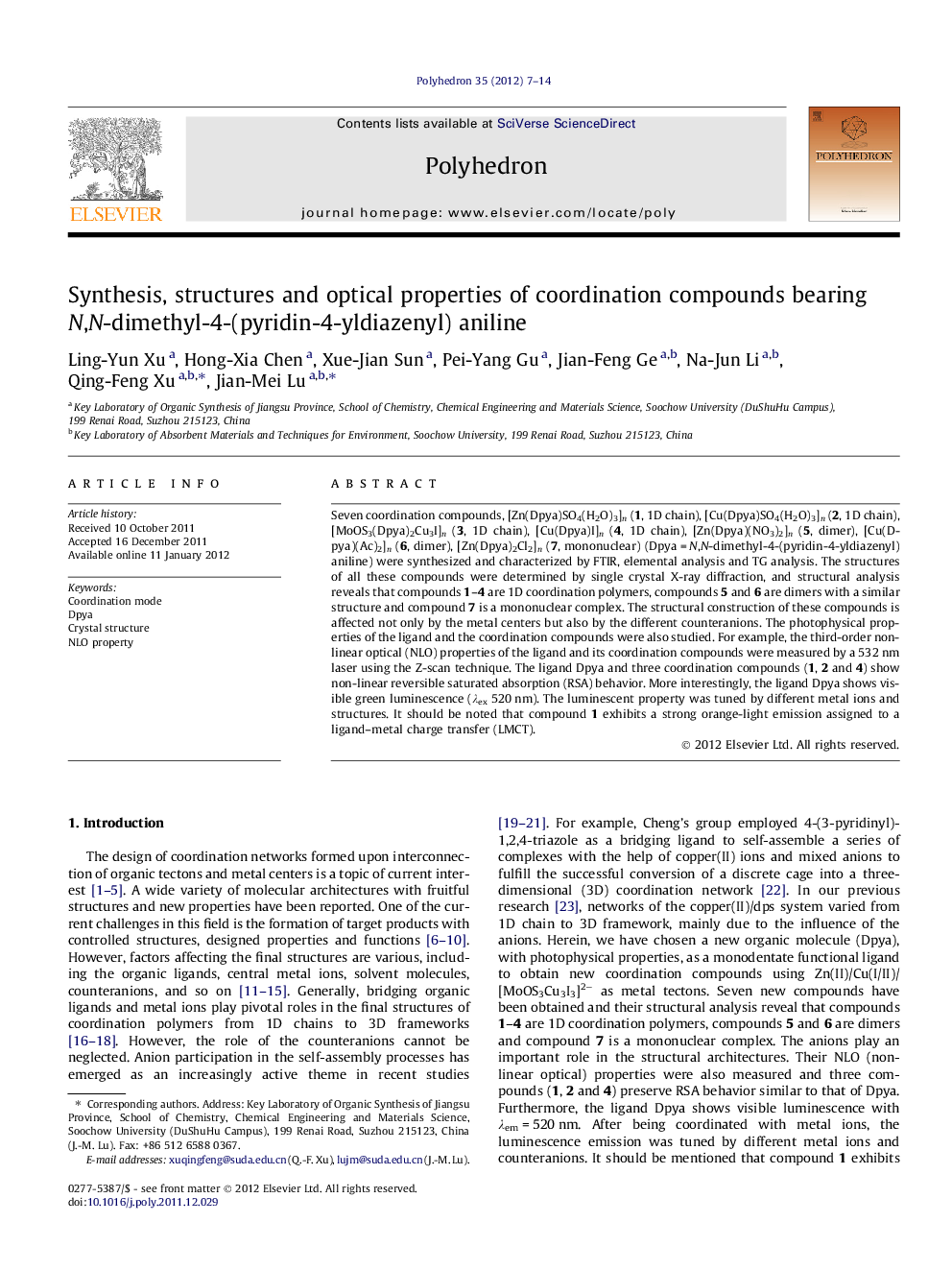| Article ID | Journal | Published Year | Pages | File Type |
|---|---|---|---|---|
| 1337793 | Polyhedron | 2012 | 8 Pages |
Seven coordination compounds, [Zn(Dpya)SO4(H2O)3]n (1, 1D chain), [Cu(Dpya)SO4(H2O)3]n (2, 1D chain), [MoOS3(Dpya)2Cu3I]n (3, 1D chain), [Cu(Dpya)I]n (4, 1D chain), [Zn(Dpya)(NO3)2]n (5, dimer), [Cu(Dpya)(Ac)2]n (6, dimer), [Zn(Dpya)2Cl2]n (7, mononuclear) (Dpya = N,N-dimethyl-4-(pyridin-4-yldiazenyl) aniline) were synthesized and characterized by FTIR, elemental analysis and TG analysis. The structures of all these compounds were determined by single crystal X-ray diffraction, and structural analysis reveals that compounds 1–4 are 1D coordination polymers, compounds 5 and 6 are dimers with a similar structure and compound 7 is a mononuclear complex. The structural construction of these compounds is affected not only by the metal centers but also by the different counteranions. The photophysical properties of the ligand and the coordination compounds were also studied. For example, the third-order non-linear optical (NLO) properties of the ligand and its coordination compounds were measured by a 532 nm laser using the Z-scan technique. The ligand Dpya and three coordination compounds (1, 2 and 4) show non-linear reversible saturated absorption (RSA) behavior. More interestingly, the ligand Dpya shows visible green luminescence (λex 520 nm). The luminescent property was tuned by different metal ions and structures. It should be noted that compound 1 exhibits a strong orange-light emission assigned to a ligand–metal charge transfer (LMCT).
Graphical abstractN,N-dimethyl-4-(pyridin-4-yldiazenyl) aniline was reacted with Zn(II)/Cu(I/II)/[MoOS3Cu3I3]2− to afford seven different coordination compounds. Structural analysis reveals that compounds 1–4 are 1D coordination polymers, compounds 5 and 6 are dimers with similar structures and compound 7 is a mononuclear complex. Compounds 1, 2 and 4 show observable NLO properties, and the luminescence of the ligand and coordination compounds are affected by the metal ions and structural architectures.Figure optionsDownload full-size imageDownload as PowerPoint slideHighlights► New functional ligand Dpya was applied in the coordination compounds. ► Structural constructions are obviously affected by different anions. ► Emission of coordination compounds was tuned by metal ions and anions.
